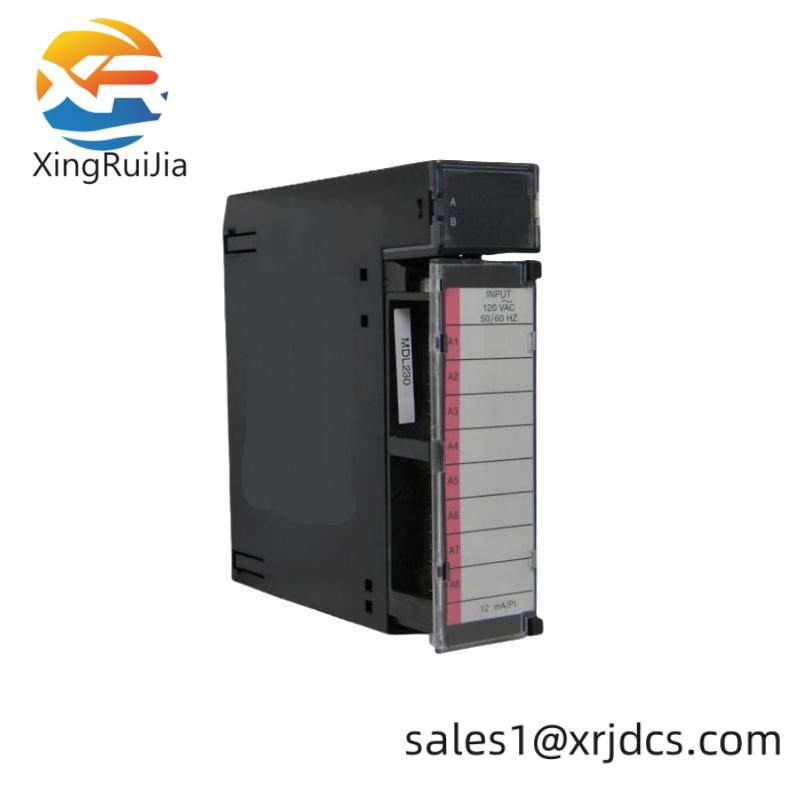Technical Parameter
Brand:General Electric
Model:DS200TCDAG1ABA
Series:Mark V
Type:Digital I/O Board
Input Voltage:10-30V DC
Output Voltage:10-30V DC
Number of Inputs:8
Number of Outputs:8
Operating Temperature Range:-40°C to +85°C
Dimensions:15.24 x 9.53 x 2.54 cm
Weight:0.5 kg
Product Introduction
The GE DS200TCDAG1ABA Digital I/O Board is meticulously engineered to offer robust performance and reliability in demanding industrial environments. Its digital inputs and outputs are designed to connect directly to sensors and actuators, facilitating seamless data transmission and control.
With up to 32 digital input channels and 32 digital output channels, this board provides ample connectivity options to suit a wide range of applications. The power supply requirement is 12V DC, making it easy to integrate into existing systems.
The board operates efficiently within a broad temperature range from -40°C to +85°C, ensuring it remains functional even in extreme conditions. Its compact size of 12 x 8 x 2 cm and lightweight design at just 0.25 kg make it ideal for space-constrained installations.
Manufactured by General Electric, this board adheres to stringent quality standards, offering long-lasting performance and minimal maintenance needs. It is designed to enhance the overall efficiency and reliability of your industrial control systems.
For optimal performance, we recommend consulting with our technical support team to ensure proper installation and configuration. Our expert guidance will help you leverage the full capabilities of the GE DS200TCDAG1ABA Digital I/O Board.

Annual hot selling advantage products:
ABB PM665、ABB S-073N、ABB S-123H 3BHB030479R0512
First hand source, affordable price. Spot inventory!
•Shipping Port: Xiamen
•Ship to you via Fedex/DHL/TNT/UPS/EMS
•Package: Original packing with cartons
What is a DCS?
A Distributed Control System (DCS) is a sophisticated, computer-based control system designed to automate, monitor, and manage complex industrial processes. It is widely used in large-scale industrial facilities such as refineries, power plants, chemical plants, and paper mills, where precision, reliability, and scalability are critical.
How Does a DCS Work?
A DCS is composed of several interconnected components that work seamlessly to ensure efficient process control. Here’s a breakdown of its key elements:
- Controllers:
These are the “brains” of the system. Controllers receive data from sensors, process it using pre-programmed logic, and send output signals to actuators to maintain optimal process conditions. - Sensors:
Sensors act as the “eyes and ears” of the system, measuring critical physical parameters such as temperature, pressure, flow rate, and level. This real-time data is essential for accurate control. - Actuators:
Actuators are the “muscles” of the system. They execute physical actions based on controller commands, such as opening/closing valves, starting/stopping motors, or adjusting dampers. - Operator Stations:
These serve as the human-machine interface (HMI), allowing operators to monitor the process, adjust setpoints, and troubleshoot issues. Modern DCS systems often feature intuitive graphical interfaces for ease of use. - Communication Network:
The backbone of the DCS, this network connects all components, enabling seamless data exchange and coordination. It ensures that every part of the system works in harmony, even across large industrial sites.
Why is a DCS Important?
- Centralized Control with Distributed Execution: A DCS allows for centralized monitoring while distributing control functions across multiple controllers, reducing the risk of system-wide failures.
- Scalability: It can easily expand to accommodate growing operational needs.
- Reliability: Redundant systems and fail-safes ensure continuous operation, even in critical environments.
- Efficiency: Optimizes processes, reduces waste, and improves overall productivity.













There are no reviews yet.